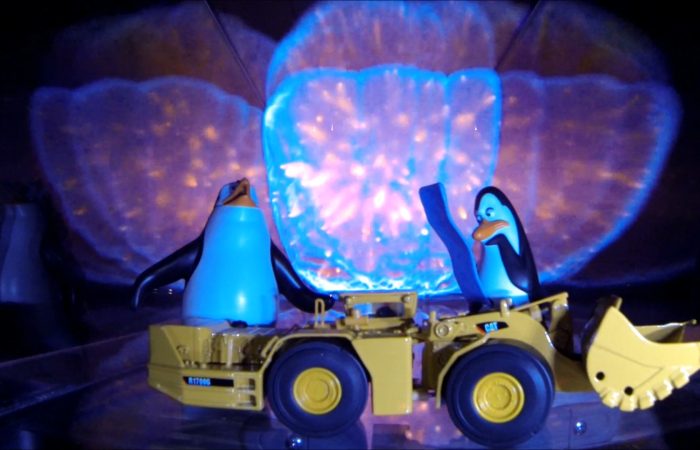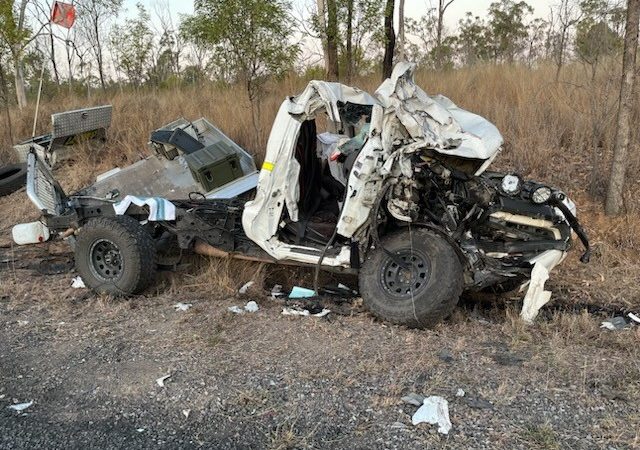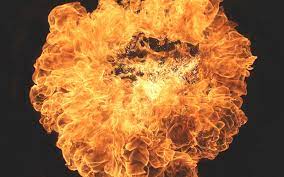
Following exerted pressure from the Department and greater recognition by Mines of the hazard of elevated methane levels, substantially more effort and investment had been made into methane drainage capacity and efficiency. This was clearly increasing the amount of gas drained, decreasing operational downtime by early intervention to avoid exceedances rather than cutting to trigger trip events. Most importantly risk was being reduced.
Between the 6th and 8th of January there were Five (5) methane HPI’s in the Tailgate of LW 102.
The first when the Longwall had retreated 29m and the last when at the 40m mark.
The outlook of the Inspectors back from in February 2016 has come to pass in less than 2 years,
The Mine is relatively uncomplicated at present but it is anticipated that the future will present more challenging conditions especially in regard to working temperatures and effective pre-drainage of methane from Goonyella Middle seam and surrounding strata.
The problem is that all the Anglo Grosvenor Managements focus; and the Mines Inspectorate seems to be on effective post drainage via surface to seam goaf drainage holes “to reduce the risk.”
MRE – Grosvenor Coal Mine – 18.01.2018
In the MRE of the 18th January 2018, the Inspectors state/boast that
Following exerted pressure from the Department and greater recognition by Mines of the hazard of elevated methane levels, substantially more effort and investment had been made into methane drainage capacity and efficiency.
This was clearly increasing the amount of gas drained, decreasing operational downtime by early intervention to avoid exceedances rather than cutting to trigger trip events.
Most importantly risk was being reduced.
What a load of self serving bull…..
“Exerted Pressure from the Department.”
When? Where? How? Who? Where are the Mine Record Entries and Directives?
“operational downtime”
How or why “operational downtime” is mentioned is beyond me.
The Coal Mining Act defines Risk and Hazard and Acceptable Level of Risk
18 Meaning of risk
Risk means the risk of injury or illness to a person arising out of a hazard.
Risk is measured in terms of consequences and likelihood.
19 Meaning of hazard
A hazard is a thing or a situation with potential to cause injury or illness to a person.
29) What is an acceptable level of risk
2) To decide whether risk is within acceptable limits and as low as reasonably achievable regard must be had to—
a) the likelihood of injury or illness to a person arising out of the risk; and
b) the severity of the injury or illness.
This sentence from the Mine Record Entry just sticks in my guts.
Following exerted pressure from the Department and greater recognition by Mines of the hazard of elevated methane levels,
“GREATER RECOGNITION”.
Were/Are Grosvenor Management really that ignorant of the hazard of elevated methane levels?
Or is it they just did not believe a methane ignition would ever happen, no matter how many times they continually exposed workers to methane over 2.5% at the working face?
Everything looks so much easier. simpler and safer from the airconditioned office while playing on the computer.
The continued almost total reliance on post drainage did not really reduce the risk.
As the next 28 months showed, there was in fact an ever increasing probability of the the potential of methane over 2.5%, and then up over the lower explosive limit on the electrically powered longwall face.
The risk of inducing spontaneous combustion was increased by the focus on post drainage of methane and its continuing inability to cope with and ever increasing gas load.
There are several different elements to note from the comments the Inspectors made after getting a presentation about the gas drainage program from the SSE Trent Griffith.
- The 5 HPI’s are from “The difficulties of providing effective drainage is due to the face start position being coincident vertically with the Isaac River and associated sands.”
- It is accepted by the Department that one report covering all exceedances to this time will suffice.
- MG 103 Development Floor Methane Emissions “The emissions generated were due to floor coal being left capping the lower part of the seam below the Tonstein band which periodically ruptured. The thicker the floor coal the more significant the emission with examination of minor peaks traced as being attributable to thinner floor coal.”
The last HPI on the 8th has a pretty typical description of the HPI’s.
The HPI notes that there is a difference of very close to 0.5% methane between the 400m sensor (2.09%) and the dogleg sensor (2.56%)
Uni-Di cutting from TG to MG has already been introduced due to high background levels at the 400m sensor
At around 9:32am, the shearer on the LW102 face was manually stopped at 104 roof support travelling to the TG during a flit run (as currently cutting uni directional) due to increasing methane levels in the LW TG Return.
The methane levels at this point in time in the LW TG Return increased to 2.09% at the inbye monitor (located approximately 400 metres outbye of the face).
However added with the methane emissions in the TG from the adjacent goaf, this resulted in a peak of 2.56% at the methane monitor at the outbye end of the LW102 return.
The methane levels at this monitor were greater than 2.5% for approximately 17 minutes
Inspector Marlborough made reference to other experiences in the Bowen Basin at mines where exceedances had occurred.
Following exerted pressure from the Department and greater recognition by Mines of the hazard of elevated methane levels, substantially more effort and investment had been made into methane drainage capacity and efficiency.
This was clearly increasing the amount of gas drained, decreasing operational downtime by early intervention to avoid exceedances rather than cutting to trigger trip events.
MG103 Development the emissions generated were due to floor coal being left capping the lower part of the seam below the Tonstein band which periodically ruptured.
The thicker the floor coal the more significant the emission with examination of minor peaks traced as being attributable to thinner floor coal.
MRE – Grosvenor Coal Mine – 18.01.2018
Mr Trent Griffiths (SSE), Mr Cec Ivers (UMM), Mr Rob Nowell (Production Manager), Mr Christopher Carroll (MEM), Mr Michael Webber (VO)
The only specific issues raised by the Inspectors at the Close Out meeting were the content of ERZC Statutory Reports and the good work in gas analysis the mine is performing which will assist in the planning of effective goaf drainage
3.0 Close-out Meeting
Inspector Marlborough raised the issue of ERZ Controllers not including on their statutory reports information regarding gas alarms reported to them by the Control Room Operator.
It is important the ERZ Controllers not only record these reports, but they should also write on their reports the results of their investigation into the alarm and any actions taken as a result.
Inspector Marlborough suggested that the mine communicate this to their ERZ Controllers.
The mine had done some good work in analysing the gas data to try to predict the time when a goaf drainage hole is likely to come on line.
This work will assist in the planning of effective goaf drainage to maintain a high level of control over the level of methane produced during production operations on the Longwall,
MRE Methane Extracts
The principal reasons for the inspection were, to introduce Inspector Scully to the Mine and to review the series of methane exceedances which have occurred in the recent past as Longwall 102 has moved into production. Contribution was made individually and at times collectively on all introductory matters
1.1 Methane exceedances
The series of exceedances were explained by Mr Griffiths by reference to LW102 Goaf Holes GR02L005 which gave a 3D representation of goaf holes drilled at various angles/directions in an attempt to effectively capture methane liberated by the Longwall which has retreated 23m.
These were related to anticipated caving angles and the pattern of volumes of methane. The Mine intend to build on this information and respond to the requirement to produce an investigation into the HPls associated with methane exceedances.
It is accepted by the Department that one report covering all exceedances to this time will suffice.
The difficulties of providing effective drainage is due to the face start position being coincident vertically with the Isaac River and associated sands.
Inspector Marlborough made reference to other experiences in the Bowen Basin at mines where exceedances had occurred.
Following exerted pressure from the Department and greater recognition by Mines of the hazard of elevated methane levels, substantially more effort and investment had been made into methane drainage capacity and efficiency.
This was clearly increasing the amount of gas drained, decreasing operational downtime by early intervention to avoid exceedances rather than cutting to trigger trip events.
Most importantly risk was being reduced.
1.3 Update on Development Floor Methane Emissions
The following comments were included in the Mine Inspection report completed by Inspector Gouldstone 26/10/17,
‘MG 103 Development
The Development has progressed beyond 29CT where the sequence was amended to include a short drill stub in the 29CT to allow coring and two flanking holes for B and C headings.
The Mine has instigated a Floor Heave and Gas Release Management team who are continuously monitoring progress and all parameters to identify potential causes and solutions. / have read through the sets of minutes provided to familiarise myself with the action being taken. ‘
The outcome of the precautionary approach taken has largely confirmed that the emissions generated were due to floor coal being left capping the lower part of the seam below the Tonstein band which periodically ruptured.
The thicker the floor coal the more significant the emission with examination of minor peaks traced as being attributable to thinner floor coal.
Examination of micro-geological features from coring showed features of cleat and coal hardness variation upon examination by subject experts.
This reinforced the TARP associated with a tolerance of floor horizon no more than 300mm.


